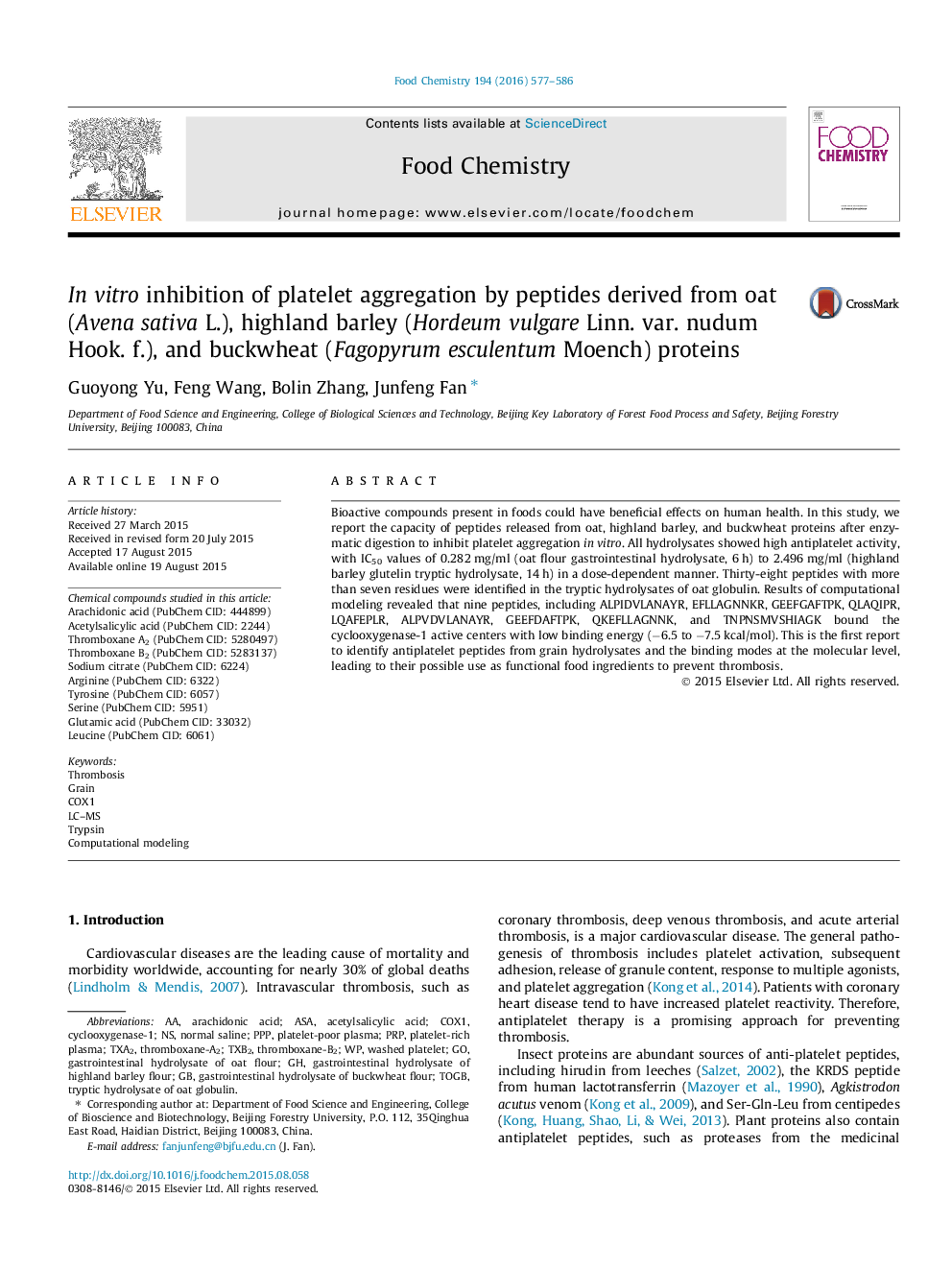| Article ID | Journal | Published Year | Pages | File Type |
|---|---|---|---|---|
| 7590253 | Food Chemistry | 2016 | 10 Pages |
Abstract
Bioactive compounds present in foods could have beneficial effects on human health. In this study, we report the capacity of peptides released from oat, highland barley, and buckwheat proteins after enzymatic digestion to inhibit platelet aggregation in vitro. All hydrolysates showed high antiplatelet activity, with IC50 values of 0.282Â mg/ml (oat flour gastrointestinal hydrolysate, 6Â h) to 2.496Â mg/ml (highland barley glutelin tryptic hydrolysate, 14Â h) in a dose-dependent manner. Thirty-eight peptides with more than seven residues were identified in the tryptic hydrolysates of oat globulin. Results of computational modeling revealed that nine peptides, including ALPIDVLANAYR, EFLLAGNNKR, GEEFGAFTPK, QLAQIPR, LQAFEPLR, ALPVDVLANAYR, GEEFDAFTPK, QKEFLLAGNNK, and TNPNSMVSHIAGK bound the cyclooxygenase-1 active centers with low binding energy (â6.5 to â7.5Â kcal/mol). This is the first report to identify antiplatelet peptides from grain hydrolysates and the binding modes at the molecular level, leading to their possible use as functional food ingredients to prevent thrombosis.
Keywords
ASATyrosine (PubChem CID: 6057)Arachidonic acid (PubChem CID: 444899)Acetylsalicylic acid (PubChem CID: 2244)Thromboxane-B2TXB2TxA2PrPCOX1Sodium citrate (PubChem CID: 6224)PPPArginine (PubChem CID: 6322)LC–MSacetylsalicylic acidArachidonic acidThrombosisTrypsinGrainnormal salinecyclooxygenase-1Computational modelingplatelet-poor plasmaplatelet-rich plasma
Related Topics
Physical Sciences and Engineering
Chemistry
Analytical Chemistry
Authors
Guoyong Yu, Feng Wang, Bolin Zhang, Junfeng Fan,
